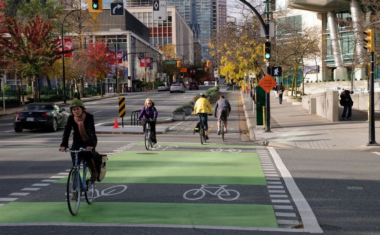Networked traffic lights
- 2285
- 4 min to read

Vienna, Austria
About the city. Traffic in Vienna is regulated by approximately 1,300 traffic signal systems.
Goal
The main aim is to reduce the waiting time for pedestrians and regulate traffic. The new intelligent system allows traffic jams to be resolved more quickly and emissions reduced. Moreover, the aim is to equip all traffic lights in Vienna with high-quality sensors that are able to directly transfer the data to an online tool for analysis. In the first expansion stage, sensors for measuring temperature and humidity are planned. At a later stage, sensors for nitrogen oxide, sulfur oxide and noise are going to follow.
This project is a part of the Smart City project.
Implementation period.
The system has been tested in Vienna’s tenth district since May 2017.
Fact
Congestion levels by highways decreased from 2017 to 2018 by 3%, in particular, from 25% to 22%.
Solutions
What have they done?
1. The information is passed on to GPS systems so that networked traffic lights can adjust driving speed recommendations and facilitate using green waves.
2. Individual traffic lights communicate with each other and resolve unpredictable traffic jams caused by accidents or construction sites quicker. Traffic light phases can thus adapt to the actual traffic situation, thereby improving the traffic flow and reducing emissions.
3. In process. In cooperation with the Central Institute for Meteorology and Geodynamics (ZAMG), the traffic lights will be equipped with around 10,000 weather and environmental sensors over the next few years.
What kind of information is needed? Temperature and humidity measuring, nitrogen oxide, sulfur oxide and noise.
Why do they do that? Using big data analytics patterns and correlations can be identified and used for practical applications.
Team
The University of Technology (TU) in Graz and Vienna’s municipal department MA 33, additionally Zentralanstalt für Meteorologie and Geodynamik (ZAMG).
Timeline
- Since May 2017, the system has been tested.
- As of September 2019, the intelligent traffic lights will gradually replace the approximately 200 existing push-button traffic lights.
If you notice an error or inaccuracy in our editorials, please email [email protected] so we can look into it.






